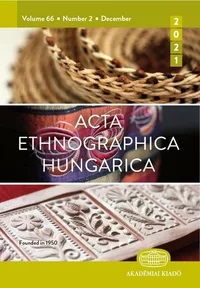The Establishment of the Royal Hungarian State School of Lacemaking in Körmöcbánya (Kremnica) and Its Impact on the Lacemaking Cottage Industry in the 20th Century
The Establishment of the Royal Hungarian State School of Lacemaking in Körmöcbánya (Kremnica) and Its Impact on the Lacemaking Cottage Industry in the 20th Century
Author(s): Lilla Erdei T.Subject(s): Cultural history, Recent History (1900 till today), History of Education
Published by: Akadémiai Kiadó
Keywords: Körmöcbánya (Kremnica) lace; bobbin lace; cottage industry; Béla Angyal; Emília Angyal; Körmöcbánya (Kremnica)
Summary/Abstract: The Royal Hungarian State School of Lacemaking in Körmöcbánya was the earliest independent institution in the field of Hungarian bobbin lacemaking. Unfortunately, there is little information available about the school, largely due to the revision of national borders as a result of the Treaty of Trianon. Following a survey of what remained of the lacemaking cottage industry in Upper Hungary [now mostly present-day Slovakia], teaching was organized from 1883 in itinerant workshops in Bars and Zólyom counties (in Úrvölgy, Sóvár, Eperjes, and Hodrusbánya). Annual training courses, as part of a school-based teaching system, were introduced probably in around 1894, and from 1899 yearbooks were published by the Royal Hungarian State School of Lacemaking in Körmöcbánya. Until 1909 (with the exception of the 1888/89 academic year), Körmöcbánya functioned as the administrative center, while teaching took place in local schools, first in Jánoshegy and subsequently in Óhegy, Jánosrét, Kunosvágás, and Kékellő, where schools opened in succession. Poorer students were awarded scholarships to participate in the two-year training, and those who wished to work in the cottage industry were given employment following graduation. Besides introducing the readily marketable Carlsbad, Idrija, Cluny, and Torchon lace patterns that were taught at the school, Béla Angyal was the first to expand the treasury of Upland lace patterns with the addition of new Hungarian designs, while Emília Angyal was responsible for their technical elaboration. For a while, state-sponsored lacemaking in Upper Hungary provided a relatively good livelihood for the female members of working families, although this situation changed with the influx of cheap foreign lace, and especially with the spread of mass production. Besides popular foreign patterns and techniques, the school in Körmöcbánya also played an important role in the spread of new tools in Hungary.
Journal: Acta Ethnographica Hungarica
- Issue Year: 66/2021
- Issue No: 2
- Page Range: 497-515
- Page Count: 19
- Language: English
- Content File-PDF

